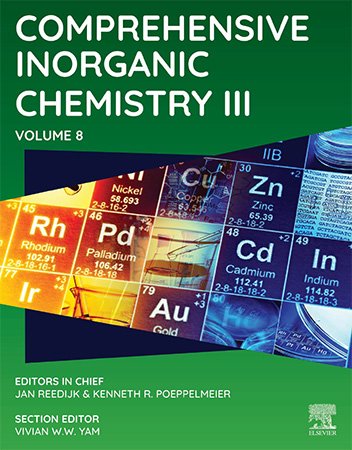Comprehensive Inorganic Chemistry III, Vol. 8: Inorganic Photochemistry
-
BaDshaH
- Posts: 6114
- pinterest kuchnie warszawa
- Joined: Sat Jan 20, 2024 6:39 am
Comprehensive Inorganic Chemistry III, Vol. 8: Inorganic Photochemistry

Comprehensive Inorganic Chemistry III, Vol. 8: Inorganic Photochemistry
Vivian W.W. Yam | 2023 | ISBN: 0128231440 | English | 828 pages | PDF | 45 MB
Comprehensive Inorganic Chemistry III, a ten-volume reference work, is intended to cover fundamental principles, recent discoveries, and significant applications of elements and their compounds. Authored by renowned experts in the field and edited by a world-class editorial board, each chapter provides a thorough and in-depth overview of the topic covered, featuring resources which will be useful to students, researchers, faculty as well as those in the industry.
Comprehensive Inorganic Chemistry III focuses on main group chemistry, biological inorganic chemistry, solid state and materials chemistry, catalysis, and new developments in electrochemistry and photochemistry, as well as NMR and diffraction methods for studying inorganic compounds.
In this Volume the editor has compiled 19 chapters discussing recent developments in a variety of developments in the field. The introductory chapter overviews the several topics, including photoactivation and imaging reagents. The first chapters include a discussion of using luminescent coordination and organometallic compounds for organic light-emitting diodes (OLEDs) and applications to highlight the importance of developing future highly efficient luminescent transition metal compounds. The use of metal compounds in photo-induced bond activation and catalysis is highlighted by non-sacrificial photocatalysis and redox photocatalysis, which is another fundamental area of immense research interest and development. This work facilitates applications like biological probes, drug delivery and imaging reagents. Photochemical CO2 reduction and water oxidation catalysis has been addressed in several chapters. Use of such inorganic compounds in solar fuels and photocatalysis remains crucial for a sustainable environment. Finally, the photophysics and photochemistry of lanthanoid compounds is discussed, with their potential use of doped lanthanoids in luminescence imaging reagents.

